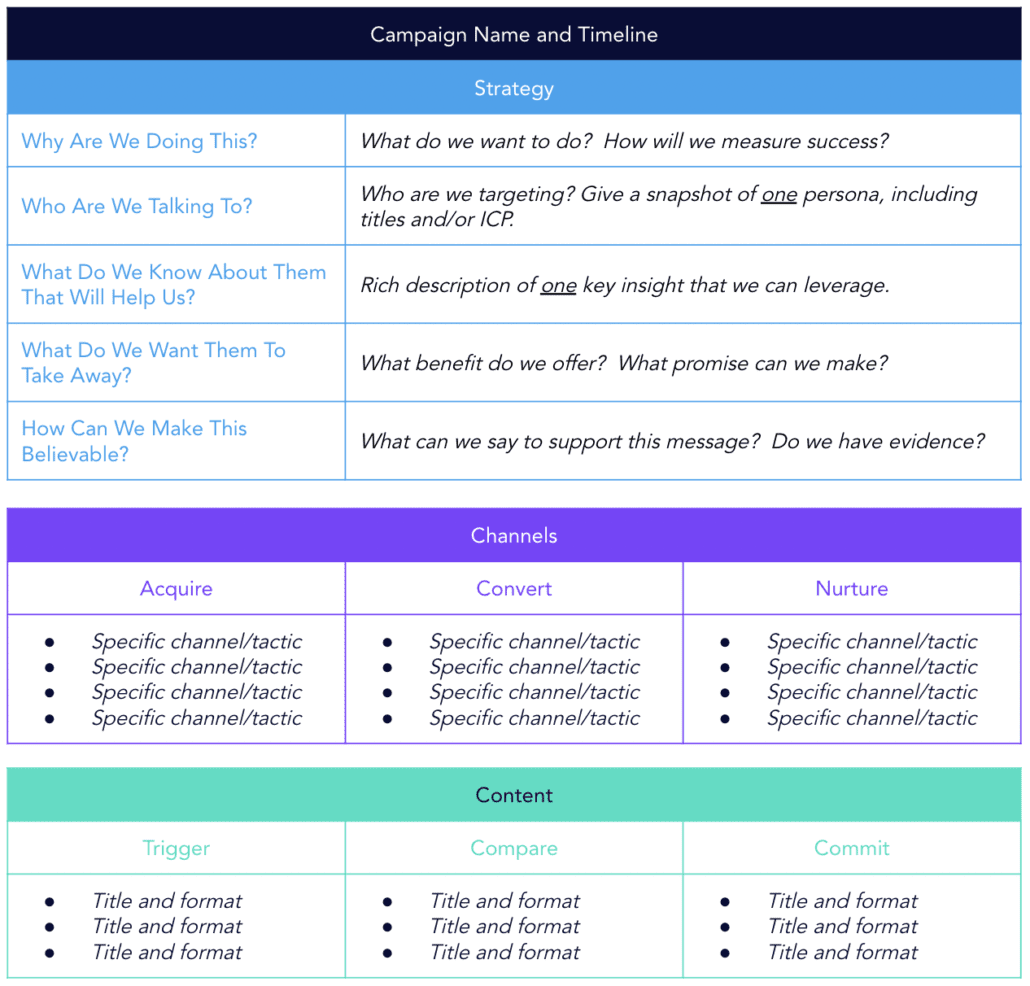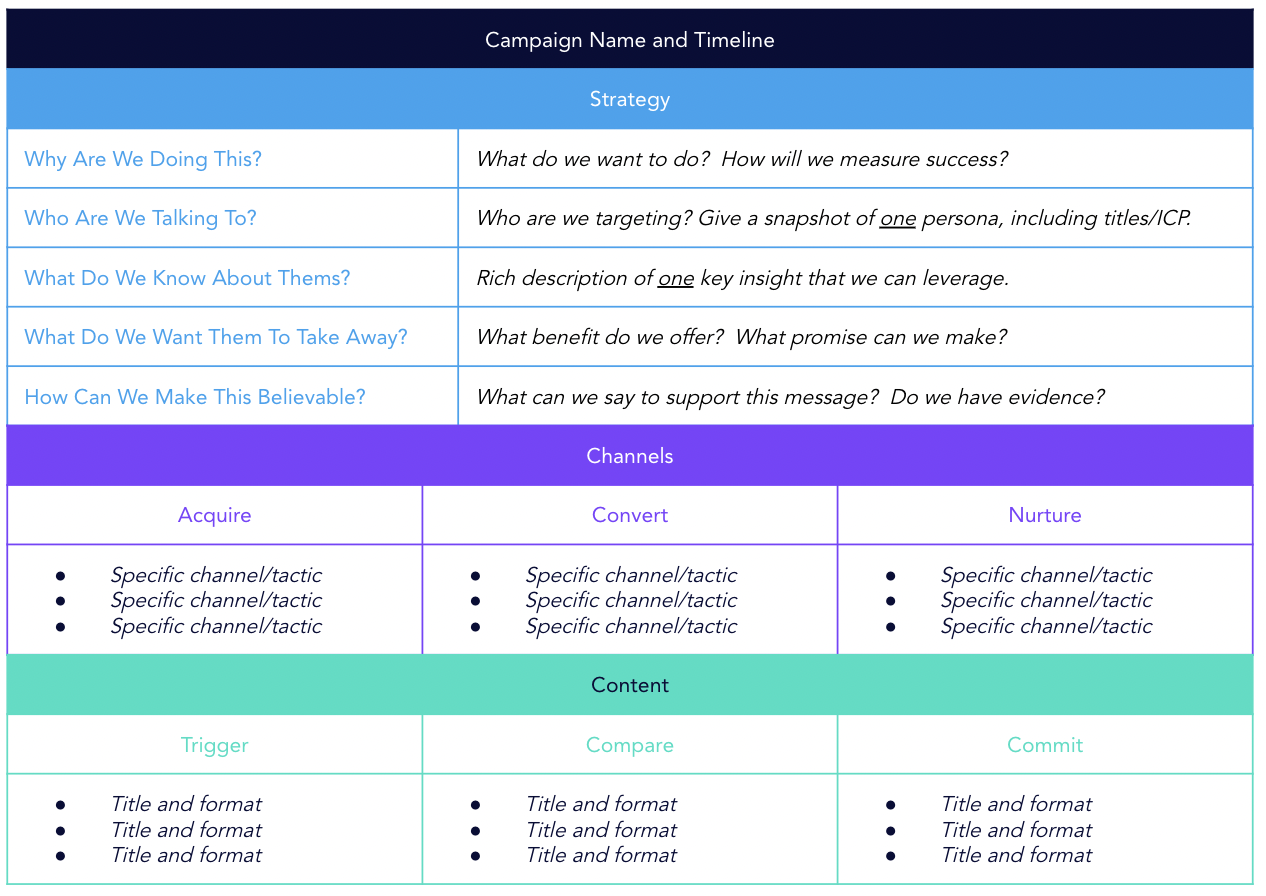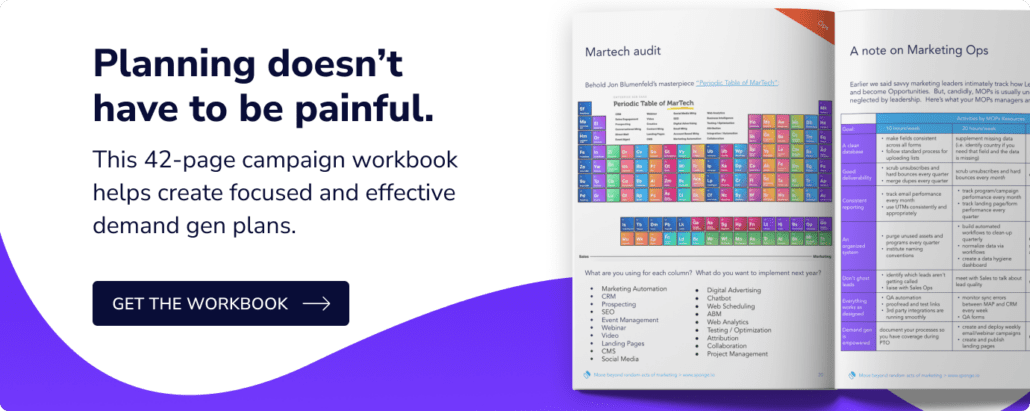We’ve all been at companies where marketing campaigns and product launches felt unstructured, pointless, or exhausting. Instead of a hundred-slide or 200-row marketing campaign plan, leverage this simple, one-page framework.
>> Related: How to Assess Your Marketing Maturity (and Then Evolve It) <<
In this post:
Video walkthrough
Step 1: Audit your channels
Before wasting a ton of hours on a webinar no one attends or a blog series no one reads, start by mapping what channels you’re using now, what you spent, and how they perform. You’ll quickly see where you have no coverage or appalling waste. Sample channels include:
- Acquire:
- SEO/blogging
- Paid ads
- Telemarketing
- List buys/augmentation
- 3rd party webinars
- Podcasts
- Trade shows
- Convert:
- Outbound BDRs
- Webinars
- Pre-recorded demo
- Free trial
- Pricing request
- Email nurture
- Nurture:
- Inbound BDRs
- Webinars
- Email nurture
- Retargeting
- Engage:
- Webinars
- Newsletters
- Reference program
- 3rd party review program
Be bold enough to kill anything that isn’t working. Do not be afraid of losing leads. If you have campaigns or channels that generate leads with abysmal conversion rates, cut them. Free up that budget to try something new. You have nothing to lose.
BTW if you can’t see how individual channels are performing, prioritize attribution over the next 6 months. This kind of visibility is key to making intelligent decisions about your marketing.
Step 2: Write a Campaign Strategy Brief
Creating a compelling marketing campaign is… not easy. And too often we try to make a campaign appeal to everyone and promote everything we sell. The result is a wan message that goes nowhere, no matter how much budget we throw at it. Instead, allow me to introduce you to the campaign strategy brief.
Campaign briefs are an essential investment in your demand gen strategy. Use this template to tease out:
- the campaign’s measurable goal
- the specific persona you’re targeting
- your unique promise to them
- and the evidence that makes it believable
Having these four pillars in place ensures your campaign is focused, efficient, and aligned. #welikeefficient
Step 3: Gather your content
One of the biggest mistakes I see in B2B demand gen is “waiting” for new content. First of all, you’ll be waiting for months! Worse, content marketing is about anticipating your buyer’s questions in the formats they trust most. So, instead of wishing for 14 new white papers, or webinars, or “big ideas from product marketing”, fill your marketing campaign with just a few core assets. You’ll simply repackage them into the formats best suited to your key audience and your most performant channels.
Use this content marketing plan to map content for this specific campaign. You only need a handful of assets.
Step 4: Synthesis
Now it’s time to pull together your channels, strategy, and new/existing content into a one-page campaign plan. I think of this as a puzzle… more of a critical thinking exercise than a creative one:


That’s it! Circulate with the team and hammer out the details so the campaign is specific, realistic, and will actually reach your most important persona with your most important message. I’m also happy to review your work! Just get in touch!





